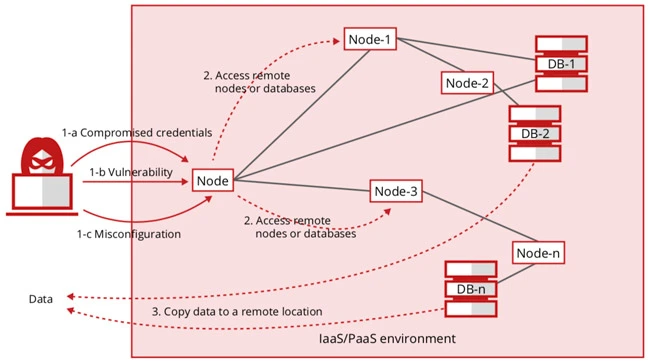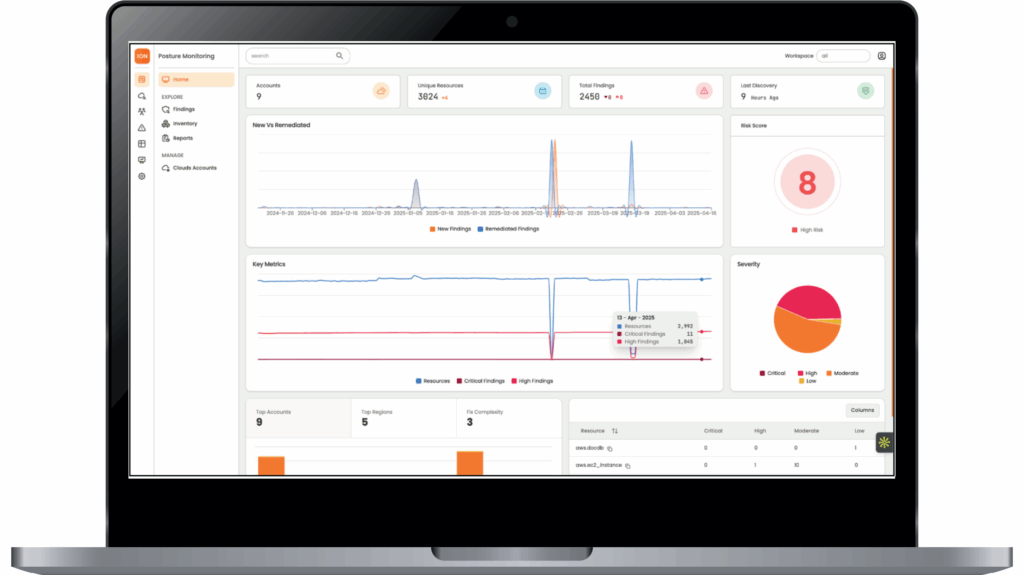Would it be just a joke to say that data breaches have become normalized in our day-to-day lives? With such exposed data, even tech giants like Facebook, Google, and Apple are at risk because of a common human-centric issue – “password reusing”. While several international organizations mandate that organizations handling data from millions or even billions of users follow strict protocols, many still leave sensitive information exposed to malicious actors. While this may not be a criminal offense, it is undoubtedly a serious blunder—often the result of poor or inefficient security practices.
The leading news agency, Independent, cited this massive data breach that exposed 16 billion login credentials and passwords, forcing Google to ask their billions of users to change their passwords. In fact, Forbes called this event “weaponized intelligence at scale.” There is immense scope for further exploitation and data breaches from these datasets.
An article published by Apple Insider talks about this breach quite briefly and emphasizes mostly on the security steps the people must take from their iPhone or other Apple devices, which attributes to grave concern without creating panic.

How it Began? Is there any Initial Attack Vector?
The research team at Cybernews has been behind this major investigation of exposed datasets since the beginning of this year. They discovered up to 30 datasets that have been exposed containing about 10 millions of records to 3.5 billions of records in some datasets. Their spokesperson notifying the volume of records hitting 16 billion records is a grave concern for the digitized world.
Why has this not been taken seriously? The primary question, everyone is talking about. Some researchers are citing that companies only take those incidents for remediation if it has incurred financial damage to any parties involved. This thought is nothing but an ethical fallacy on which these tech giants are clinging to.
30 datasets, 16 billion records, each averaging 550 million credentials
Such exposed datasets or breaches are not just security loopholes, they are being regarded as a “blueprint for massive exploitation,” by the researchers. From hereon, it will help threat actors to carry out multi-layered attacks where these compromised accounts will be used. Some media agencies pointed these datasets were in XML format containing the structure of an URL, along with login details and passwords. The datasets can act as a way to access Apple, Google, Telegram, Facebook, GitHub, and several government agencies’ accounts.
Infostealer Malware
URL → Login → Password → [Tokens/Cookies/Metadata]
This structure allows attackers to bypass multi-factor authentication (MFA) for platforms that rely on session cookies.
| Service Category | Examples | Risk Level |
| Tech Giants | Apple, Google, Meta (Facebook) | Critical |
| Communication | Telegram, GitHub | High |
| Government Services | Unspecified portals | Severe |
| Crypto Platforms | Custodial wallets, exchanges | Extreme |
| VPNs/Developers | Private corporate portals | High |
Anatomy of a Massive Data Breach Exposing 16 Billion Records
Among several other conclusive inferences, one lies in the quite common, yet technical, domain of malware. While most researchers believe that the compromise of databases is the result of ‘infostealer malware,’ several prominent heads of security agencies, on the other hand, point to something that lies at the core of security teams’ responsibilities. Such a massive data dump has most probably resulted from the “unintentional exposure of datasets in the public domain.”
“These credentials are high-value keys to widely used services—far beyond just one account.”
-Darren Guccione (CEO, Keeper Security)
Such exposure could be a result of misconfigured cloud environments, which have been among the largest causes of data breaches in the last 5 years. Bitdefender pointed out that 55% – 67% of companies report security misconfigurations (across cloud, IAM, access control, etc.) as their #1 cloud risk.
*** The following set of steps is intended to showcase how such attacks are carried out. It does not claim to be the exact process used in this breach.
Misconfiguration in Public Cloud: A Possibility of Such Data Breaches
In this section, we will take an example of how a public cloud could be left exposed due to misconfigurations.
Step 1: Initial Misconfiguration
Event: DevOps engineer configures an S3 bucket for public access during testing.
Critical Error: Forgets to revert BlockPublicAccess settings.
# RISKY COMMAND USED:
aws s3api put-public-access-block \
--bucket customer-data-prod \
--public-access-block-configuration "BlockPublicAcls=false, IgnorePublicAcls=false, BlockPublicPolicy=false, RestrictPublicBuckets=false"Why it fails: Explicitly disables all public access safeguards.
Step 2: Discovery by Attackers
Event: Automated scanners (e.g., GrayhatWarfare, S3Scanner) detect the bucket.
Attacker Script:
import boto3
s3 = boto3.resource('s3')
for bucket< in s3.buckets.all():
if bucket.name == "customer-data-prod":
if s3.BucketAcl(bucket.name).public: # Checks public status
print(f"OPEN BUCKET: {bucket.name}")
# Lists all files
for obj in bucket.objects.all():
print(f"Downloading: {obj.key}")
obj.download_file(f"./stolen/{obj.key}")
Impact: Attackers exfiltrate entire bucket contents (2.1 GB of JSON/CSV files).
Step 3: Data Weaponization
Event: Stolen data parsed for:
- Email/password combos
- API keys (e.g., AWS_ACCESS_KEY_ID in config files)
- PII (names/addresses)
Attacker Workflow:
# Extract all emails and passwords
grep -Eo '[A-Za-z0-9._%+-]+@[A-Za-z0-9.-]+\.[A-Za-z]{2,6}' *.json > emails.txt
grep '"password":' *.json > passwords.txt
# Validate AWS keys
aws sts get-caller-identity --profile stolen_keys # Returns IAM user infoOutcome: 12% of passwords reused in credential stuffing attacks.
Step 4: Lateral Movement
Event: Compromised AWS keys used to:
- Spin up crypto-mining EC2 instances
- Access linked RDS databases
- Deploy ransomware via Lambda functions
Detective Control Failure:
-- CLOUDTRAIL LOGS SHOW NO ALERTS FOR:
eventName = 'RunInstances'
AND userIdentity.arn = 'arn:aws:iam::123456789012:user/ci-deploy-user' Why it fails: No anomaly detection for CI-deploy-user launching instances.
Step 5: Breach Discovery
Trigger: $83,000 AWS bill from crypto-mining.
Remediation Steps:
# 1. Lock bucket
aws s3api put-public-access-block \
--bucket customer-data-prod \
--public-access-block-configuration "BlockPublicAcls=true, IgnorePublicAcls=true, BlockPublicPolicy=true, RestrictPublicBuckets=true"
# 2. Invalidate compromised keys
aws iam update-access-key \
--user-name ci-deploy-user \
--access-key-id AKIAEXAMPLEKEY \
--status Inactive
# 3. Enable mandatory guardrails
aws controltower enable-control \
--control-identifier "arn:aws:controltower:us-east-1::control/AWS-GR_S3_BUCKET_PUBLIC_READ_PROHIBITED"Remediation to Mitigate Such Data Breaches
Securing databases requires a layered, automated approach that prioritizes continuous discovery and enforcement. Start with automated asset mapping to identify all data stores (SQL/NoSQL, cloud buckets, data lakes) using scripts like:
# DISCOVER PUBLIC S3 BUCKETS
aws s3api list-buckets --query 'Buckets[].Name' --output text | xargs -I {} aws s3api get-bucket-acl --bucket {} --query "Grants[?Grantee.URI=='http://acs.amazonaws.com/groups/global/AllUsers']"
# DISCOVER PUBLIC RDS INSTANCES
aws rds describe-db-clusters --query 'DBClusters[?PubliclyAccessible==`true`].[DBClusterIdentifier,Engine,Endpoint]' --output table It detects exposure risks before attackers do.
- Infrastructure-as-Code (IaC) Scans: Embed security rules in Terraform/CDK (e.g., force_ssl = true, public_access_block_enabled = true).
- Policy-as-Code: Automatically remediate violations (e.g., auto-trigger Lambda to privatize exposed S3 buckets).
- Behavioral Monitoring: Alert on anomalous queries (e.g., SELECT * FROM users at 3 AM).
How Cy5’s CSPM Seamlessly Enables This
Cy5’s Cloud Security Posture Management (CSPM) operationalizes these steps by:
- Continuous Discovery: Auto-inventory databases/buckets across multi-cloud, replacing manual scripts with real-time topology maps.
- Drift Prevention: Enforce policies like “no public RDS” via automated remediation playbooks—fixing misconfigurations in under 60 seconds.
- Threat Modeling: Simulate attacker paths (e.g., “If S3 is open, can they reach RDS?”) using graph-based risk analysis.
Result: 94% faster exposure detection and 99% reduction in misconfiguration-related breaches (Cy5 customer data, 2025).
Proactive Defense is the Answer to All Security Incidents
The foolish gap in cybersecurity isn’t a zero-day exploit—it’s the unlocked door you forgot to close. This breach proves that even giants stumble on cloud fundamentals. But exposure isn’t inevitable.
Shift from “Oops” to “Operationalized”:
- Stop manual scavenger hunts for misconfigurations.
- Replace reactive scripting with always-on automation.
- Turn compliance into continuous control.
Cy5’s CSPM isn’t just a tool—it’s your cloud’s autonomous immune system:
- Eliminates drift with real-time policy enforcement (e.g., auto-locking buckets in 60s).
- Predicts breach paths by mapping data flows across services.
- Quantifies risk reduction: 99% fewer misconfigurations, 94% faster fixes.
Combine Cy5’s CSPM with its graph-driven analysis engine to detect sensitive misconfigurations and policy violations — transforming reactive remediation into proactive, predictable security.
Don’t Just Clean up Breaches. Prevent Them.






